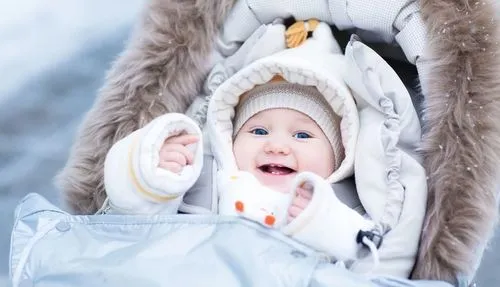Travel first aid kit for kids: Ensuring a safe and healthy vacation
April 25, 2025
Katka

When planning a family vacation, especially with kids, safety is a top priority. An essential part of this preparation is packing a well-equipped travel first aid kit. This guide covers everything you need to ensure your little ones stay healthy and happy, from fever management to handling allergic reactions.
Disclaimer: This article is for informational purposes only. Always check with your doctor or pharmacist about medicines suitable for your child!
What to pack in a travel first aid kit for children
Do you remember travelling before your children were born? One backpack, shoes, phone, credit card, passport and water bottle. Complications are solved on the spot. But with the arrival of children comes a host of uncertainties. When a child gets sick at home, you go to your pediatrician, you buy familiar medicines at the pharmacy, or you just reach into the home medicine cabinet you have stocked year-round.
On vacation, however, you don't have that convenience. Unfamiliar surroundings, unfamiliar doctors, unfamiliar medicines, language barriers and often the unavailability of a medical facility near you can lead to panic, worsening of your child's condition and complications you don't want to experience on holiday.
If you prepare a first aid kit for your travels according to our list, almost nothing can surprise you. Here we go!
 Fever management
Fever management
Fever can strike at the most inconvenient times, and being prepared can make all the difference. Your travel first aid kit should include:
- reliable thermometer - preferably a digital one for quick and accurate readings, or for babies butt thermometer with rubber flexible tip,
- age-appropriate fever reducers - such as ibuprofen or acetaminophen (paracetamol).
Understanding ibuprofen and paracetamol
Ibuprofen is a non-steroidal anti-inflammatory drug (NSAID) that not only helps to reduce fever but also eases inflammation and pain. There are specific weight and age guidelines that must be followed to ensure safety.
Acetaminophen (Paracetamol) is an analgesic and antipyretic, primarily used to relieve pain and reduce fever. Follow the recommended dosage guidelines.
Choose the dosage form (suppository, syrup, tablet) according to the age and possible cooperation of the child. In young children, a suppository is preferable to syrup.
 Dealing with diarrhea
Dealing with diarrhea
Changes in water, food, or even the stress of travel can sometimes lead to diarrhea in children. There is not such a large number of anti-diarrheal drugs for children on the market. It is advisable to carry natural purified clay - Smecta. It is used to treat acute and chronic diarrhea, it is not absorbed into the body, does not stain the stool, is effective in treating painful symptoms.
The most important thing is to ensure:
- diarrhoea arrest - it is important to avoid further dehydration,
- rehydration - that is, replacement of lost fluids and salts,
- realimentation - supplying food that the body will tolerate.
Keep hydration packets or solutions in your kit to quickly address fluid loss.
 Cuts and falls
Cuts and falls
Scrapes, cuts, and falls are almost a given with children on the move. One scraped knee heals, the other gets scraped. Pack:
- antiseptic wipes/cream/spray - for cleaning wounds before bandaging. For children, it is advisable to choose disinfectants that do not sting or burn.
- range of bandages - from adhesive strips to gauze pads, to cover different wound sizes.
Band-aids with baby motifs are also a win, which will ward off crying from the slightest scrape, especially if you let the child choose. Buy patches in a variety of sizes to fit elbow, knee and baby's little finger.
As a mother of a boy with perpetually chafed limbs, I can also recommend the use of:
- liquid dressing in spray - for minor injuries, it provides waterproof wound coverage,
- hemagel + protective film for wounds - great stuff for deep area abrasions. It's about moist wound healing. It prevents the child from getting a scab that would crack and cause problems when bending, for example, the knee. Plus, kids like to scrape scabs off. With hemagel, the wound heals without a scab.

 Allergic reactions
Allergic reactions
Pack antihistamine in your holiday kit, even if you have no known allergies. Allergies can easily become apparent, especially when abroad, when exploring new foods, animals or plants. Children's skin is very sensitive and can become allergic to the sun, for example.
The most common antihistamine to pack is:
- Fenistil
For kids with known allergies, having antihistamines in your first aid kit is non-negotiable. These can provide quick relief for mild to moderate allergic reactions. For severe allergies, ensure you carry an epinephrine auto-injector (EpiPen) and are familiar with its use.
 Motion sickness
Motion sickness
Long car rides or flights can lead to motion sickness in children. Include over-the-counter motion sickness medications like dimenhydrinate (Dramamine) suitable for children. Ginger chews or peppermint candies can also offer natural relief. The form needs to be adapted to the age of the child!
 Eye and ear care
Eye and ear care
Don't forget to include eye drops to alleviate irritation from chlorine or saltwater. A great one is a saline (physiological) solution designed for eyewash. It makes it easy to get rid of sand or other impurities in the eyes.
Another must-have are drops designed to prevent swimmer's ear, especially if your vacation involves pool or beach activities.
Pack:
- eye drops,
- ear drops,
- saline solution.
 Insect bites and stings
Insect bites and stings
Small children often attract a huge number of insects, whether because they roll in the grass and ticks so easily caught, or because of the mouth coated from ice cream, which with its sweetness attracts wasps.
Pack:
- insect repellent sprays or lotions - prevent bites,
- hydrocortisone cream or calamine lotion can be used to soothe any that occur,
- tweezer for tick removal if you're heading to nature.
 Sun protection
Sun protection
Sunburn can quickly ruin a vacation. A broad-spectrum sunscreen with a high SPF, water-resistant properties, and suitable for children's sensitive skin is a must. Additionally, pack aloe vera gel or a soothing lotion for after-sun care.
Disclaimer: This article is for informational purposes only. Always check with your doctor or pharmacist about medicines suitable for your child!
Practical tips for packing a first aid kit
- Organize your first aid items in a waterproof container, clearly labeled and easily accessible. Opt for travel-sized packaging to save space while ensuring you have all the essentials.
- Take the drugs out of the boxes: Download the medication instructions to your phone or cut out the instructions and attach them to the medication. This will save a lot of space.
- Big first aid kit vs small one for a trip: Keep one large first aid kit at your accommodation and take a small version with you on trips to treat any injuries your children may have on the trip. For example - I don't need to take a thermometer, fever medicine or a pair of tick nippers on a half day bike trip. Realistically, on a bike trip, kids are at risk for a steam and scraped knee, allergies or sand in their eyes.
One extra tip!
- Have a baby monitor with you: Just because your child gets sick on holiday doesn't mean you have to spend the whole day cooped up in your room. That's exactly what the Bibino baby monitor is made for, so you can go out for a hotel dinner or sunbathe in front of your suite by the hotel pool while your sick child sleeps. Bibino informs you of every movement and sound your baby makes.

Frequently asked questions
1. What should be included in a travel first aid kit for kids?
A comprehensive travel first aid kit for kids should include a reliable thermometer, age-appropriate fever reducers (like ibuprofen or acetaminophen), medications for diarrhea, antiseptic wipes or creams for cuts and scrapes, bandages in various sizes, antihistamines for allergic reactions, motion sickness remedies, eye and ear care solutions, insect repellent, and sun protection products. Always ensure medications are suitable for your child's age and check with a healthcare professional if unsure.
2. How do I manage fever in children while traveling?
To manage fever in children while traveling, always carry a reliable thermometer and age-appropriate fever reducers such as ibuprofen or acetaminophen. Ensure you follow the dosage guidelines based on your child's age and weight. For younger children, suppositories might be preferred over syrup or tablets for ease of administration.
3. What can I do for diarrhea in children during a trip?
For managing diarrhea, include oral rehydration solutions or hydration packets in your first aid kit to quickly replenish lost fluids and salts. Natural purified clay like Smecta can also be useful for treating symptoms without being absorbed into the body. It's crucial to maintain hydration and gradually reintroduce tolerated foods.
4. How should I handle cuts and falls?
For cuts and falls, pack a range of antiseptic wipes, creams, or sprays to clean wounds before bandaging. Include a variety of bandages and adhesive strips to cover different sizes of wounds. Consider liquid dressings for minor injuries and hemagel for deeper abrasions, as they promote moist wound healing and prevent scabbing.
5. What are the essentials for dealing with allergic reactions?
For allergic reactions, include an antihistamine like Fenistil in your kit, even if your child doesn't have known allergies. For children with severe allergies, carrying an epinephrine auto-injector (like an EpiPen) is crucial, and make sure you know how to use it. Always consult a healthcare professional regarding the best choices for your child.
6. How can I prevent and treat motion sickness in children?
To prevent and treat motion sickness in children, consider over-the-counter medications like dimenhydrinate (Dramamine) that are suitable for kids. Natural remedies like ginger chews or peppermint candies can also provide relief. Always check the age suitability of any medication and consult with a healthcare professional if unsure.
7. What should I include for eye and ear care?
For eye and ear care, include saline solution for washing out irritants like sand or chlorine, eye drops for irritation relief, and ear drops to prevent swimmer's ear, especially if your vacation involves swimming activities.
Conclusion
Preparing a comprehensive travel first aid kit for your kids not only gives you peace of mind but also ensures you're ready to handle minor medical issues, making your vacation safer and more enjoyable for everyone.
Continue reading...
Show all articlesCopyright & trademark notices
Apple, the Apple logo, and iPhone are trademarks of Apple Inc., registered in the U.S. and other countries and regions. App Store is a service mark of Apple Inc. Mac App Store is a service mark of Apple Inc. Google Play and the Google Play logo are trademarks of Google LLC. Windows® and the Windows logo are either registered trademarks or trademarks of Microsoft Corporation in the United States and/or other countries. Linux® is the registered trademark of Linus Torvalds in the U.S. and other countries.


